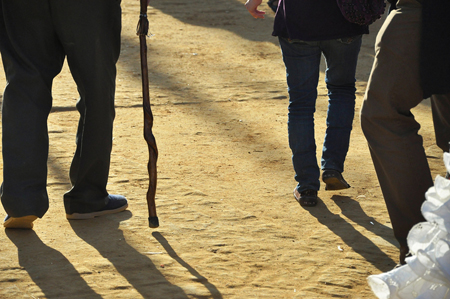| << Chapter < Page | Chapter >> Page > |
Thanks to amendments to the Age Discrimination in Employment Act (ADEA), which drew attention to some of the ways in which our society is stratified based on age, U.S. workers no longer must retire upon reaching a specified age. As first passed in 1967, the ADEA provided protection against a broad range of age discrimination and specifically addressed termination of employment due to age, age specific layoffs, advertised positions specifying age limits or preferences, and denial of healthcare benefits to those over sixty-five years old (U.S. EEOC 2012).
Age stratification theory has been criticized for its broadness and its inattention to other sources of stratification and how these might intersect with age. For example, one might argue that an older white male occupies a more powerful role, and is far less limited in his choices, compared to an older white female based on his historical access to political and economic power.
Finally, exchange theory (Dowd 1975), a rational choice approach, suggests we experience an increased dependence as we age and must increasingly submit to the will of others because we have fewer ways of compelling others to submit to us. Indeed, inasmuch as relationships are based on mutual exchanges, as the elderly become less able to exchange resources, they will see their social circles diminish. In this model, the only means to avoid being discarded is to engage in resource management, like maintaining a large inheritance or participating in social exchange systems via child care. In fact, the theory may depend too much on the assumption that individuals are calculating. It is often criticized for affording too much emphasis to material exchange and devaluing nonmaterial assets such as love and friendship.

Generally, theories within the symbolic interactionist perspective focus on how society is created through the day-to-day interaction of individuals, as well as the way people perceive themselves and others based on cultural symbols. This microanalytic perspective assumes that if people develop a sense of identity through their social interactions, their sense of self is dependent on those interactions. A woman whose main interactions with society make her feel old and unattractive may lose her sense of self. But a woman whose interactions make her feel valued and important will have a stronger sense of self and a happier life.
Symbolic interactionists stress that the changes associated with old age, in and of themselves, have no inherent meaning. Nothing in the nature of aging creates any particular, defined set of attitudes. Rather, attitudes toward the elderly are rooted in society.
One microanalytical theory is Rose’s (1962) subculture of aging theory , which focuses on the shared community created by the elderly when they are excluded (due to age), voluntarily or involuntarily, from participating in other groups. This theory suggests that elders will disengage from society and develop new patterns of interaction with peers who share common backgrounds and interests. For example, a group consciousness may develop within such groups as AARP around issues specific to the elderly like the Medicare “doughnut hole,” focused on creating social and political pressure to fix those issues. Whether brought together by social or political interests, or even geographic regions, elders may find a strong sense of community with their new group.

Notification Switch
Would you like to follow the 'Introduction to sociology 2e' conversation and receive update notifications?